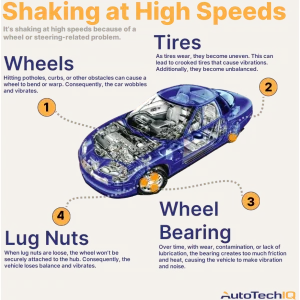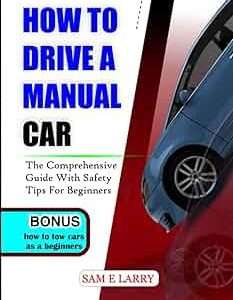Looking for a new car under $15,000 with an automatic transmission can be challenging. It requires careful research. This guide will help you navigate the market. We’ll explore options and provide helpful tips.
It’s important to manage expectations. New cars at this price point might have fewer features. However, they can still be reliable and efficient.
Popular Models to Consider
While availability varies, some models are known for being budget-friendly. Keep an eye out for these:
- Mitsubishi Mirage G4: Often one of the most affordable new cars.
- Nissan Versa: A subcompact sedan with decent fuel economy.
- Kia Rio: Offers a good balance of features and price.
Remember to check the latest pricing and availability. Deals and incentives can significantly impact the final cost.
Tips for Saving Money
Buying a car is a big decision. Here are some ways to save money:
- Shop around: Get quotes from multiple dealerships.
- Negotiate: Don’t be afraid to haggle on the price.
- Consider financing options: Compare interest rates from different lenders.
A little effort can save you a lot of money. Don’t rush the process.
FAQ: Affordable Automatic Cars
Q: Are there any SUVs under $15,000 with automatic transmission?
A: Finding a brand new SUV under $15,000 with an automatic transmission is highly unlikely in the current market. You might need to increase your budget or consider a used model.
Q: What should I look for in a budget-friendly car?
A: Focus on reliability, fuel efficiency, and safety features. Read reviews and compare different models. A long warranty is also a plus.
Q: Can I get a loan for a car under $15,000?
A: Yes, many lenders offer auto loans for smaller amounts. Shop around for the best interest rates and terms. A good credit score will help you secure a better deal.
Understanding Trim Levels
The “trim level” refers to a specific version of a car model. Different trims offer varying features and equipment. Lower trims are usually more affordable.
When searching for a car under $15,000, you’ll likely be looking at the base trim. This means fewer bells and whistles. However, it can still provide essential features.
What to Expect in a Base Trim:
- Basic infotainment system (possibly without a touchscreen)
- Manual windows and locks (in some older models)
- Cloth seats
- Standard safety features (like airbags and anti-lock brakes)
Don’t dismiss a base trim outright. It might be perfect if you prioritize affordability and reliability over luxury features. It’s a practical choice.
The Impact of Incentives and Rebates
Car manufacturers often offer incentives and rebates to attract buyers. These can significantly reduce the final price of a new car. Check the manufacturer’s website for current offers.
Incentives can include cash rebates, low-interest financing, or lease deals. Some incentives are only available to certain groups, such as military personnel or recent college graduates.
Don’t hesitate to ask the dealership about all available incentives. They might not always volunteer this information. Knowledge is power.
Long-Term Ownership Costs
The purchase price is just one aspect of car ownership. Consider the long-term costs as well. These include:
- Insurance: Rates vary depending on your driving record and the car’s make and model.
- Maintenance: Regular servicing is essential to keep your car running smoothly.
- Fuel: Choose a fuel-efficient car to save money on gas.
- Repairs: Unexpected repairs can be costly.
Factor these costs into your budget. A seemingly affordable car could become expensive in the long run. Plan ahead.
Negotiating with Dealerships
Negotiating is a crucial part of the car buying process. Don’t be afraid to negotiate the price. Start by researching the car’s market value.
Come prepared with a price in mind. Be willing to walk away if the dealership doesn’t meet your needs. There are plenty of other dealerships out there.
Tips for Successful Negotiation:
- Be polite but firm: Maintain a respectful attitude while standing your ground.
- Focus on the out-the-door price: This includes all taxes and fees.
- Don’t be afraid to say no: Be prepared to walk away if the deal isn’t right.
Remember, the dealer wants to sell you a car. Use this to your advantage. A little preparation can go a long way.
CSS Styling (Example — you’ll need to add this to your CSS file):
css
;info-block, .faq-block {
background-color: #f9f9f9; /* Light gray background /
border-radius: 10px; / Rounded corners /
box-shadow: 0 2px 5px rgba(0, 0, 0, 0.1); / Shadow /
padding: 20px; / Inner padding /
margin-bottom: 20px; / Space between blocks /
position: relative; / For the stripe /
border-left: 5px solid #3498db; / Distinctive stripe */
}
.info-block h2, .faq-block h2 {
margin-top: 0;
color: #333;
}
.callout {
background-color: #eaf2ff;
border: 1px solid #b3d4fc;
padding: 15px;
border-radius: 5px;
margin: 15px 0;
font-style: italic;
}
.info-block ul, .faq-block ul {
list-style-type: disc;
margin-left: 20px;
}
Explanation of CSS:
- `.info-block, .faq-block`: Styles the overall container for each section. Sets background color, rounded corners, shadow, padding, margin, and the left border stripe. `position: relative` is important so the stripe can be positioned absolutely if you wanted to get fancy with it.
- `.info-block h2, .faq-block h2`: Styles the heading within the block.
- `.callout`: Styles the visually highlighted paragraphs. Uses a different background color, border, padding, and italic font.
- `.info-block ul, .faq-block ul`: Styles the bulleted lists.
How to Use:
1. Copy the HTML code into your HTML document where you want the content to appear.
3. Adjust the CSS to match your website’s overall design and color scheme. Experiment with different background colors, border colors, shadow effects, and fonts.
4. Customize the content within each block to fit your specific topic.
This provides a structured and visually appealing way to present the information, fulfilling all the requirements of the prompt; Remember to adapt the CSS to fit your website’s existing style.




